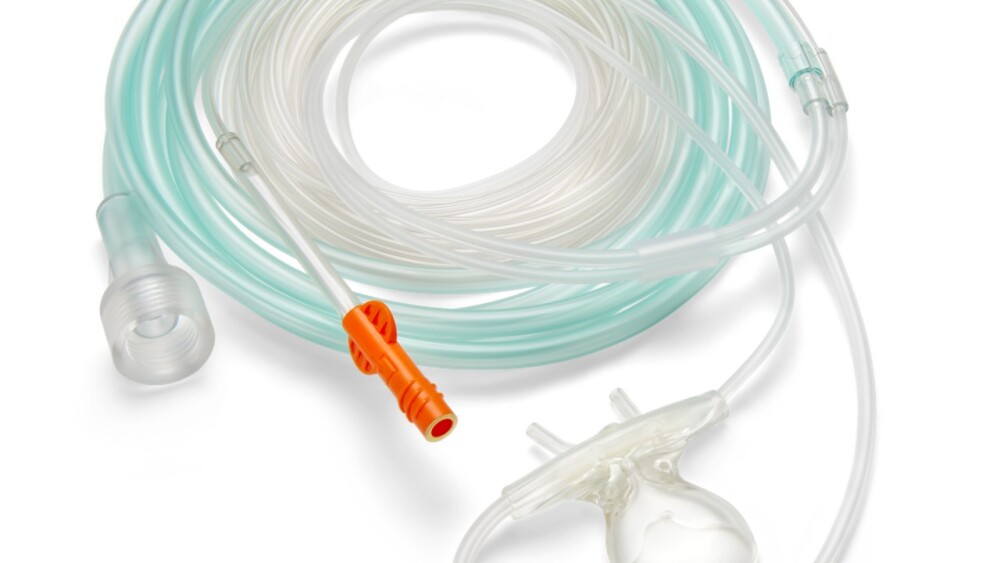Not all off-brand products are created equal.
Some may work perfectly fine, to be sure. Generic equivalents to name-brand drugs, for instance, are often just as effective as their counterparts while costing less. Tap water doesn’t really taste any worse than the pricey stuff in bottles.
Others purport to be as good – but in practice just aren’t. Despite looking the part, they don’t taste quite as good or work quite as well. In those cases, you may end up getting what you pay for: reduced performance and unexpected disappointment.
In emergency care, that’s the case with capnography sampling lines. Lines validated for use with monitors that have Microstream technology from Medtronic (Oridion) provide accurate, reliable monitoring of end-tidal CO2 across a range of EMS and emergency department uses. Others’ sampling lines can be used with Microstream-enabled monitors but may be less accurate, less comfortable and susceptible to breakage.
When you’re providing essential medical care, that’s no small matter.
“Using validated consumables with the technology they’re intended to be used for is really how you’re going to get optimal performance from the monitoring equipment,” said Shayna Jackson, Medtronic’s principal field marketing manager for Microstream capnography. “Not doing that may have consequences like erroneous readings that could potentially impact how you care for your patient and the clinical decisions you make.”
THE RISE OF THIRD-PARTY CONSUMABLES
That’s not just marketing talk – data backs it up:
· A 2020 study compared the accuracy of 16 capnography sampling lines from seven manufacturers used with a portable bedside capnography monitor. Investigators evaluated tensile strength, rise time and end-tidal CO2 (EtCO2) accuracy as a function of respiratory and supplemental oxygen flow rates. They found that “due to increased rise time and decreased EtCO2 accuracy, not all nasal cannula sampling lines provide reliable clinical data when cross-paired with a commercial capnography monitor.” Many of the tested lines lost accuracy when respiratory rates increased or the patient received supplemental oxygen. Monitor-matched Microstream lines from Medtronic, however, provided consistently accurate results.
· A 2023 review compared the EtCO2 accuracy and oxygen delivery of three EtCO2/O2 nasal sampling cannulas with a bedside capnography monitor. It found Medtronic’s Microstream Advance line was least affected by a flow-rate increase from 2 to 4 LPM – the others saw reductions in mean EtCO2 values.

Medtronic’s new Microstream Advance capnography sampling lines have more going for them than validation for use with Microstream-enabled monitors. Patients will most notice an improved, softer tubing that’s more comfortable on the face, as well as a neutral scent for those sensitive to smells.
Medtronic
The rise of these third-party consumables traces back to 2017, when a key patent held by Medtronic – for its signature gold-ring filter line recognition system – expired. This let other manufacturers start making compatible, similar-looking consumables that worked with the same Microstream-equipped monitors.
“Basically, a few of these manufacturers have added a new connector at the distal end of their sampling lines to replicate that ring,” said Sarah Martin, Medtronic’s global senior market development manager for patient monitoring. “They’re manufacturing their own sampling lines and replacing this one piece so that when it goes into a Microstream-enabled device, it powers on.”
That might get the job done – but comes with the above-quantified risks and others too. In January 2023, Medtronic issued a letter to customers reporting increased failure rates and monitor damage due to the connectors on third-party lines breaking off inside monitors. “Use of a third-party sampling line with a metal ring at the end of the connector imitating a Microstream FilterLine or a Microstream Advance filter line may render the Microstream-enabled monitor inoperable,” the company warned.
Another potential danger is the leakage of fluids or secretions from the line. Medtronic prevents that with a 0.2-micron hydrophobic filter that prevents ingress of moisture into the monitoring device. No evidence has been produced indicating competitors have duplicated this degree of protection.
NOVEL TECHNOLOGIES BENEFIT CARE
Medtronic’s new Microstream Advance capnography sampling lines have more going for them than validation for use with Microstream-enabled monitors. Patients will most notice an improved, softer tubing that’s more comfortable on the face, as well as a neutral scent for those sensitive to smells. On long-term lines, the drying element is placed farther from the face to reduce irritation.
Providers will benefit from several technologies and algorithms unique to Microstream:
· Smart Breath Detection (SBD) – This pattern-recognition and filtering algorithm screens out low-amplitude nonbreath exhalations such as talking, crying and snoring to calculate a more accurate respiratory rate. “This is really important in EMS,” said Jackson. “Imagine you’re trying to get readings on a patient who’s crying – you have to be able to get accurate information quickly.”
· Smart Alarm for Respiratory Analysis (SARA) – SARA averages breath-to-breath variations and recognizes and eliminates respiratory “nuisance” alarms that aren’t clinically significant.
· Uni-junction technology – This patented design senses the strongest source of breath, permitting sampling from either the nares or the mouth should the patient switch breathing methods, including at low volumes.
· Molecular Correlation Spectroscopy – This technology uses a CO2-specific infrared wavelength that’s highly specific and unaffected by other gases to measure EtCO2 accurately and deliver quality waveforms.
Additional features of Advance lines include a one-piece design to limit failure points; an oral scoop to catch CO2 from the mouth; and kink-resistant tubing that reduces alarms. Oxygen is emitted in a cloud from pinholes around the mouth and nose, while undiluted CO2 is sampled from the nares or mouth. “Many cannula designs deliver oxygen through one nare and sample CO2 through the other,” said Martin. “When oxygen is directed through one nare, it can be drying to the nasal membranes and be uncomfortable. EtCO2 accuracy can also be affected when sampling from one nare and delivering oxygen through the other, of concern in patients with deviated septum and normal nasal cycling.” Lines are available for short- and long-term use, neonates to adults, and both intubated and nonintubated patients.
These concessions to patient comfort – not always a consideration for makers of things like sampling lines – have a clinical benefit. A 2021 comparison of the company’s advanced and original sampling lines in which subjects wore each for 72 hours found the newer model more comfortable with less plastic smell. This, the authors hypothesized, could help improve compliance with long-term use.
“Where the cannula rests against the cheeks, the tubing is softer,” explained Martin. “It is also DEHP-free [a popular plasticizer that has raised concern in medical devices], and the inner geometric design makes tubing more kink-resistant, so oxygen flow remains unimpeded.”
SAVINGS MAY BE OUTWEIGHED
In fields like EMS, where there’s so much need to meet with so few resources, the need to save limited funds isn’t just understandable but virtually a mandate. But taking the lower-price road isn’t always the lower-cost option. With third-party consumables, any savings may be more than outweighed by breakage or damage that poses unanticipated repair or replacement costs.
Some services have experienced that the hard way.
“I’ve had customers in the last nine months who have switched to generics because of cost,” said Jay Murnighan, a senior regional manager for Medtronic. “Then a few months later, they switched back. And it’s because of reasons like damage or the accuracy of the readings – it impacts the outcomes they’re looking for.”
Many of those alternative manufacturers, it’s worth noting, aren’t in the business of making monitors. “Many sampling line producers with reflective ring connectors make only the lines,” Martin added. “They may not be tested or validated with a monitor because they don’t manufacture monitoring technology. Microstream capnography is a complete designed, tested and validated system.”
For more information, visit Medtronic.








